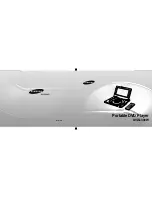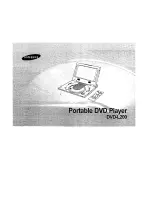
8
2.1 GENERAL SAFETy
1. Read and understand the Op-
erator’s Manual and all safety
signs before using, maintain-
ing, adjusting or cleaning the
Portable Generator.
2. Have a first-aid kit available
for use should the need arise
and know how to use it.
3. Have a fire extinguisher available for
use should the need arise and know
how to use it.
4. Wear appropriate
protective gear. This
list includes but is not
limited to:
- A hard hat
- Protective
shoes with slip
resistant rubber
soles
- Protective glasses,
goggles or face shield
- Heavy gloves
- Hearing Protection
5. Install and secure all guards before starting.
6. Wear suitable ear protection
for prolonged exposure to
excessive noise.
7. Stop and disable engine, remove ignition key
and place in your pocket and wait for all moving
parts to stop before servicing, adjusting or
repairing.
8. Clear the area of people, especially small
children, before using the unit.
9. Review safety related items annually with all
personnel who will operating or maintaining the
Portable Generator.
SAFETy
yOU
are responsible for the SAFE operation and
maintenance of your Wallenstein Portable Gener-
ator.
yOU
must ensure that you and anyone else
who is going to use, maintain or work around the
Portable Generator be familiar with the using and
maintenance procedures and related
SAFETy
information contained in this manual. This manual
will take you step-by-step through your working
day and alerts you to all good safety practices that
should be used while using the Portable Genera-
tor.
Remember,
yOU
are the key to safety. Good
safety practices not only protect you but also the
people around you. Make these practices a work-
ing part of your safety program. Be certain that
EVERyONE
using this equipment is familiar with
the recommended using and maintenance proce-
dures and follows all the safety precautions. Most
accidents can be prevented. Do not risk injury or
death by ignoring good safety practices.
• Portable Generator owners must give operat-
ing instructions to operators or employees
before allowing them to operate the machine,
and at least annually thereafter.
• The most important safety device on this
equipment is a SAFE operator. It is the op-
erator’s responsibility to read and understand
ALL Safety and Operating instructions in the
manual and to follow these. Most accidents
can be avoided.
• A person who has not read and understood all
using and safety instructions is not qualified
to use the machine. An untrained operator
exposes himself and bystanders to possible
serious injury or death.
• Do not modify the equipment in any way.
Unauthorized modification may impair the
function and/or safety and could affect the life
of the equipment.
• Think SAFETY! Work SAFELY!









































